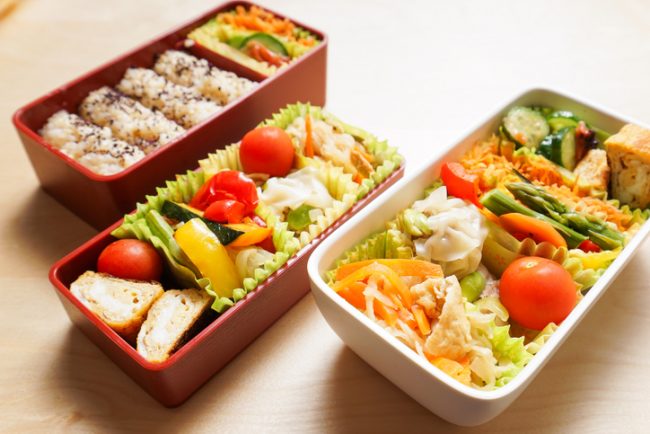If eating healthier is your intention this year, then introducing a meal-prep plan into your schedule is a must. According to Business Insider, “while it takes a lot of planning, it saves time during the rest of the week and helps people stick to their diets.” Meal prep also helps to save money by reducing waste and eliminating those last-minute drive through and takeout meals.
Feeling overwhelmed? Don’t. Getting started is far less complicated than you may think. Here’s our easy-to-follow meal prep guide to kick things off:
1. Plan, plan, plan!
Look at your upcoming week to determine which meals you need to plan.
Zagat, the restaurant rating guide, asked its surveyors how many a times a week (not counting breakfast) they ate out. The result? A national average of 4.5 times per week.
Make note of the meals that you’ll be eating outside of the house. Do you have an upcoming business trip, weekly pizza night out with the kids or dinner out with friends coming up?
Start small and build as you go along. Don’t feel like you have to plan for every meal. Plan what you’ll be eating for breakfast or lunches to pack for the kids or just focus on having dinners ready for the week.
Decide if you want to prepare complete meals that are ready to heat up when you come home or just prep ingredients for later use. Cleaning and chopping vegetables, cooking grains, marinating meats or washing and bagging salads that can easily be made into a meal are all great ways to start meal prepping.
2. Decide what to cook
Write down a list of what you will be making. Most of us have at least 10 dishes that we tend to prepare and eat on a regular basis. Think of your go-to meals, the ones that everyone loves.
When you are planning recipes, think about ingredients that can be included in other meals during the week. If you will be cooking quinoa to go with chili earlier in the week, make extra to include in black bean and quinoa burgers. Cooked grains freeze well so make extra and pop them in the freezer for another day. (You can also double up on one or two freezer-friendly meals and store for future use!) Soups, stews and casseroles tend to be freezer friendly as well.
Make smoothie bags with fresh fruits, vegetables and protein powder, portion out and freeze for a quick blend and go breakfast. Post your menu on a weekly calendar, a piece of paper or in your favorite phone app, whatever works best for you.
3. Take inventory
Dig into your pantry, freezer and refrigerator and note what you already have. Some key items to have on hand at all times include oils, salt, herbs, spices, canned beans, vinegars, grains and pastas. Don’t forget storage containers for to-go meals and for freezing foods.
4. Choose a meal prep day
Pick a day and time to do your meal prep and put it into your calendar. Weekend days are popular when most people have a little more flexibility in their schedules. Figure out what works best for you. Make it social, involve your family or ask a few friends to join in. More hands means a lighter workload for you, plus it’s a great way to try out new recipes.
5. Start shopping
Write out your shopping list and get to it! Pick a separate time other than your cook day to get the shopping done if you need to. If you keep a well-stocked pantry, it easier to focus on shopping for vegetables, meats and other perishables.
6. Let the prep begin!
Make good use of any time-saving tools you have for prepping and cooking. Slice, shred and chop raw ingredients with a salad shooter or food processor.
Break out the rice cooker for grains and cut down on cooking time with a pressure cooker. Puree a few bulbs of garlic and cover with olive oil to use for all your dishes. Cut and marinate meats for a quick stir fry. Plan a slow cooker meal or two that you can put together with prepped ingredients for dinner.
7. Pack, store & label
Choose the right storage container for your prepped ingredients and cooked meals. Choose freezer-friendly containers or storage bags. Put cooked dishes into microwave-safe or oven-proof containers if you’ll be reheating directly in the storage container.
Get in the habit of labeling everything you store with a permanent marker. Write down what it is, the date you prepper it and directions to reheat. This is a great way to avoid those mystery meal dinners.
Although these guidelines will yield you seamless, prepper-to-perfection meals, keep in mind this isn’t the only way to meal prep. Find a groove that works for you! Remember to keep it simple, avoid overwhelming yourself and build as you go along. Soon you’ll enjoy the benefits of less stress at meal times and more enjoyment.

